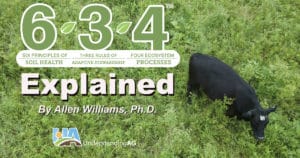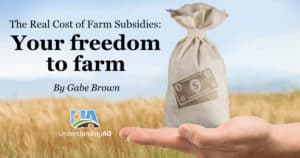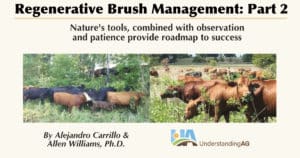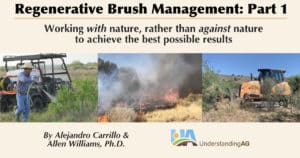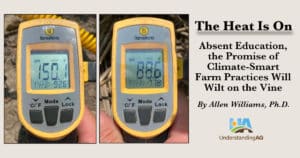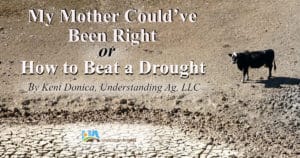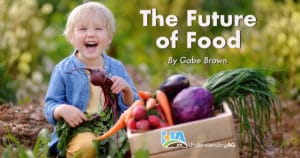From Our Experts
At Understanding Ag, the core of our teaching is centered on what we term the 6-3-4TM. This systemic regenerative approach contains the basic principles and rules that facilitate successful application and implementation of regenerative agriculture. Understanding Ag developed this system over the past several years and we have used it quite successfully in every corner of […]
Read MoreMany of you have heard me tell the story how, in 1997, while attending a conference, I heard rancher Don Campbell say, “If you want to make small changes, change the way you do things; but if you want to make major changes, change the way you SEE things.” That simple, yet profound, statement changed […]
Read MoreEditor’s note: Understanding Ag’s Gabe Brown recently received the following email from a college student who posed some intriguing questions about why he shunned farm subsidies. Following is Megan’s note and Gabe’s reply, along with a couple of additional points he added specifically for this post. Gabe, you mentioned briefly in the documentary (Kiss the […]
Read MoreWe introduced brush management tactics in part one of this series and now we will explore your best options for effective brush management and control. The first thing we must consider is why brushy and woody species dominate to begin with. Brush encroachment almost always happens because of several factors: • We have created patches […]
Read MoreDuring the past 100 years, we have been taught to eradicate plants that we perceive as a threat to what we term “desirable species.” It is true there are invasive plants that were introduced from some other place in the world-species that can overwhelm plants that we believe we want in our ecosystem. These plant […]
Read MoreWithout Education, the Promise of Climate-Smart Farm Practices Will Wilt on the Vine By Allen Williams, Ph.D. The digital screen displayed 162 F. I pointed my infrared thermometer and squeezed the trigger again. No change. The readout showed 162 F, which just happens to be the safe food preparation temperature for ground beef and sausage. […]
Read MoreWhen I was growing up, my mother had a lot of “sayings.” One was, “You would be presented with a lesson until you learned it.” At that point, she’d give me another lesson. When I was considering subjects for this article, I realized with a sense of weariness, that this particular saying was especially relevant […]
Read MorePart of my role as a partner in Understanding Ag is to keeping up to date on the trends in agriculture, staying abreast of what is “new” in agriculture-and what the industry and investors are focused on. I spend a lot of my time talking to the boards of directors of food and agriculture companies, […]
Read MoreI concluded my last post by asking if we can overdo our nurturing management (“all things in moderation”), so that it then becomes an overwhelming disturbance which outpaces the current capability of the soil to tolerate the impact? And instead of enhancing the soil biology, it then becomes deadly to it? That’s the very thing […]
Read MoreAs farmers and ranchers, we tend to be a bit stubborn and set in our ways. This leads us to operating our farms and ranches in basically the same way year after year. We use the same crop rotation, we graze the same pasture at the same time each year, and so on. I used […]
Read More
